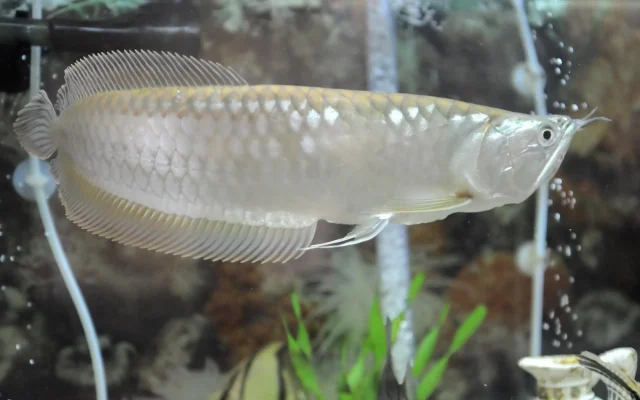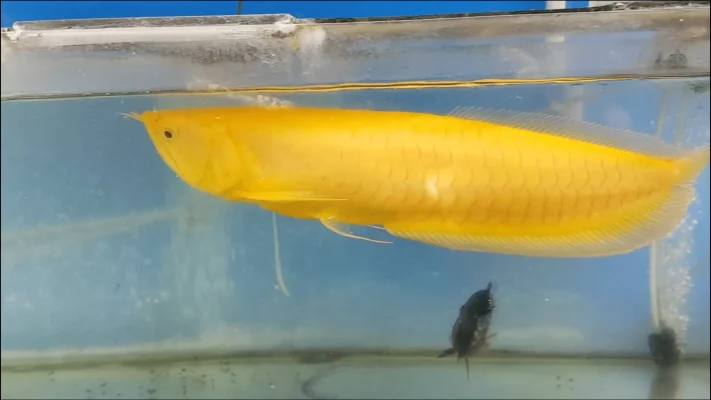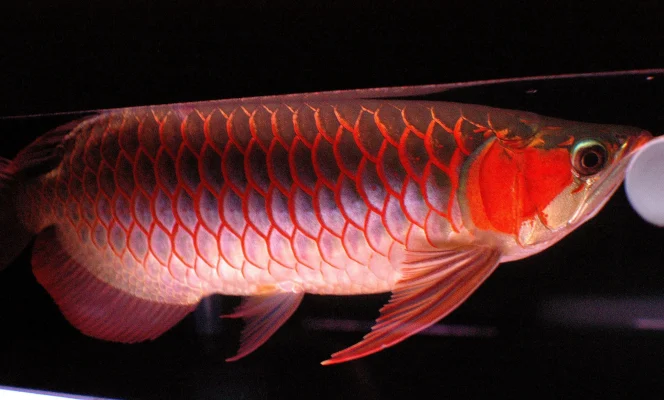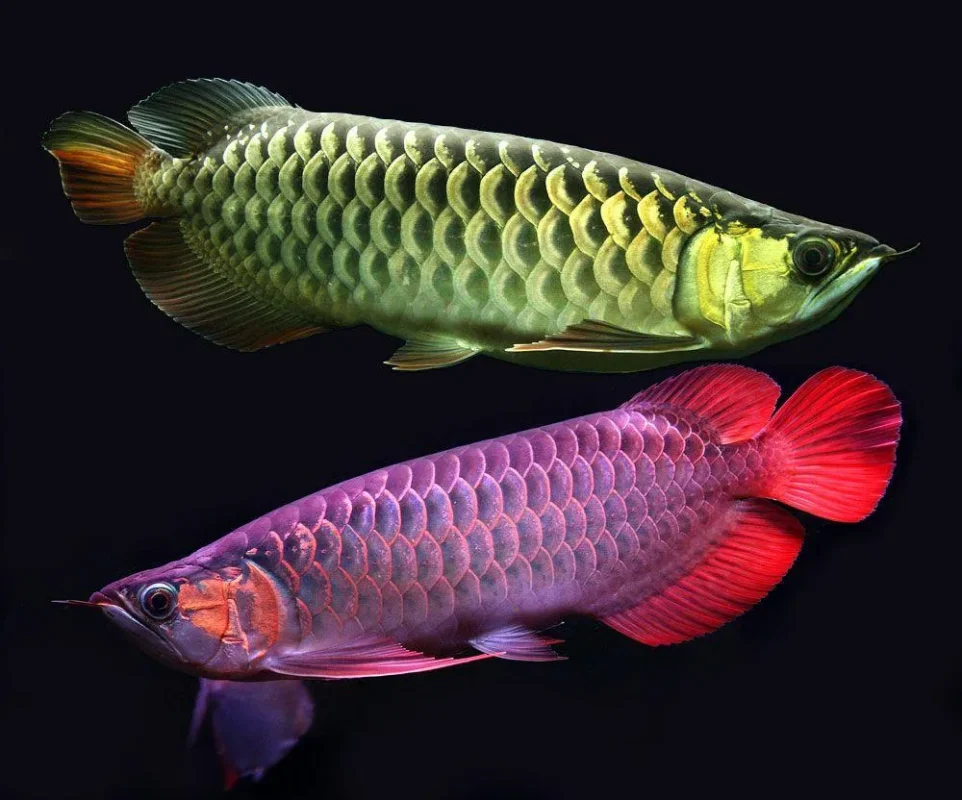Discover 7 Stunning Types of Arowana Fish – A Must-Read Guide!
Types of Arowana Fish: A Simple Guide for Enthusiasts
Ever wondered about the different types of Arowana fish? These stunning creatures, often referred to as “Dragon Fish,” captivate many with their beauty and unique characteristics. As an Arowana enthusiast, you’re probably wondering what type of Arowana fish is right for your aquarium. With so many species and varieties to choose from, it can be overwhelming to decide. At Arowanaz.org, we’re here to help you navigate the world of Arowana fish and find the perfect addition to your tank.
What Makes Arowana Fish So Special?
Arowana fish are not just any freshwater fish; they are a symbol of good luck and prosperity in many Asian cultures. The Asian Arowana, for instance, is highly sought after due to its vibrant colours and majestic presence. It’s like having a living piece of art in your tank.
Arowana types are based on their origin.
- Asian Arowana (Scleropages formosus)
The Asian Arowana is arguably the most famous of the bunch. Known for its stunning scales and elegant swimming style, this fish comes in various color variants like Red, Golden, and Green. The Red Arowana is particularly prized and can fetch high prices in the market.
This species is also protected under CITES regulations, making it important to ensure you’re buying from a reputable source. The Asian Arowana is a favorite among collectors, especially in places like Singapore and Kuala Lumpur.
The price of Asian Arowana varies from a few dollars to hundreds of dollars when adult. They inhabit bodies of fresh water like lakes and rivers that are close to or about rainforests. An Asian Arowana’s food consists of worms, snails, tiny crabs, insects, and other creatures that reside in riverbed mud or sand. Before transitioning to larger food sources as adults, they consume plankton and algae found in vegetation growing along riverbanks as juveniles.
Asian Arowana fish have long, slender bodies and thick lips with numerous rows of teeth (up to 150). While females can only reach a maximum length of 27 inches, males can reach up to 36 inches.
 Baby arowana for sale in the USA
Baby arowana for sale in the USA
Buy Silver Arowana: The Amazonian Beauty
Hailing from the Amazon River Basin, the Silver Arowana is another popular type. Unlike its Asian cousin, this species has a sleek, silvery appearance. It’s known for its impressive size and can grow quite large, making it a striking addition to any aquarium.
Silver Arowanas are easier to care for compared to other types, making them a great choice for beginners. They’re also more commonly available, so you won’t need to break the bank to get one.
Jardini Arowana: The Australian Native
Next up is the Jardini Arowana, also known as the Pearl Arowana. This fish is native to Australia and is known for its beautiful pearlescent scales. It’s a bit more aggressive than other Arowanas, so you’ll need to be mindful of its tank mates.
Jardini Arowanas are not as commonly kept as Asian or Silver Arowanas, but they offer a unique look with their intricate scale patterns. They’re perfect for those who want something a bit different.
Black Arowana: The Dark Knight
The Black Arowana is a rarer type, often overshadowed by its more colorful cousins. Originating from South America, this fish has a dark, almost black body with silver accents. It’s a fascinating species that adds a touch of mystery to any tank.
Black Arowanas require similar care to Silver Arowanas but can be a bit more sensitive to water conditions. It’s essential to keep their environment stable to ensure they thrive.
| Type | Description | Size | Habitat | Price Range |
|---|---|---|---|---|
| Silver Arowana | Native to South America, known for their long bodies and silvery scales. | Up to 4 feet | Amazon Basin | $50 – $500 |
| Asian Arowana | Includes Red, Gold, and Green varieties, highly prized in Asia. | Up to 3 feet | Southeast Asia | $400 – $4,000 |
| Jardini Arowana | Known for their aggressive behavior, native to Australia. | Up to 2 feet | Northern Australia | $100 – $800 |
| Black Arowana | Juveniles are black with yellow markings, turning silver as they age. | Up to 3 feet | South America | $100 – $300 |
How to Identify Asian Arowana Quality And Types
Asian Arowana requires more care than other Arowana species do to reach their full potential. It should be well-tanned to display its best color potential. Cross-back, extremely high-back, and high-back fishes are identified based on the degree of shimmering scales. Crossbacks are premium fish with up to sixth-level levels of color or shine. The fifth and sixth levels of the scale will be a darker shade of grey at the high back.
- South American Arowana
It is a native South American fish that can grow up to six feet long and is also referred to as a “dragon fish.” It is one of several varieties of freshwater arowanas, and it has been exported for use in aquariums for many years. Due to their vivid colors, size, and ease of care, South American arowanas have become quite popular in public aquariums. They are also easy to keep and prolific breeders, which further increases their appeal. When given the right care, this specific kind can live for more than thirty years.
South American Arowana Variety
- Silver Arowana (Osteoglossum bicirrhosum)
- Black Arowana (Osteoglossum ferreirai)
- Albino Arowana (Osteoglossum bicirrhosum)
- Australian Arowana
It is illegal to catch this fish, which is native to Australia. They are common in home aquariums, but because of their size, they take up a lot of room. They can get up to 3 feet long and 10 pounds in weight. These fish prefer warm water because they are Australian natives. These fish will experience stress and could die early if housed at colder temps.
- African Arowana
One of the most unique fish species native to Africa is the African Arowana (also known as the dragon fish), which has gained popularity as an exotic pet in recent years. Arapaima is closely related to the bony tongue fish species known as African Arowana. Only the African Arowana consumes a significant amount of plankton and has a larger terminal mouth. Adult African Arowana have lengthy bodies, broad scales, and a single color. typically seen in bronze, grey, and brown.
What are the types of arowana fish?
The Arowana fish is one of the most unusual and beautiful fish species to grace an aquarium, and fish enthusiasts of all skill levels adore them. However, because there are so many distinct varieties of Arowana fish, taking care of these fish at home might be a little challenging. Fortunately, this article will introduce you to the several varieties of Arowana fish and provide you with some advice on how to take care of each one. The origin of an Arowana determines its kind.
It’s a type of freshwater fish that hails from Southeast Asia. They’re considered a delicacy in that part of the world, and they’re prized for their bright colors and long fins.
There are 7 different types of Arowana fish, and each one has its own unique set of features. So if you’re thinking about adding one to your aquarium, it’s important to do your research and learn about the different types first.

You’re probably familiar with the Arowana fish, even if you don’t know it by name. They’re a popular fish for aquariums, and there are 8 different types of them.
Each type has its unique features, so it’s worth getting to know them all. The Silver Arowana is a popular choice for beginners because they’re hardy and easy to care for. They can grow up to 3 feet long and live up to 20 years.
Types of Arowana Fish
- Green Arowana
- Red Arowana, Super Red Arowana
- Blood Red Arowana
- Red Tail Arowana
- Chili Red Arowana
- Gold Arowana
- Golden Crossback Arowana
Arowana have incredibly large stomachs and create a lot of garbage. The ammonia, nitrite, and nitrate content of the Arowana aquarium must therefore be carefully monitored by aquarists to prevent it from reaching dangerous levels. Twice weekly water changes of up to 20% are advised. Their tank will also require a strong filtration system. The majority of Arowana owners who maintain these fish in a tank choose to purchase a sump filter or a robust, top-of-the-line canister filter.
A healthy Arowana can survive for up to 15 to 20 years with the right care. This is one of the reasons why these fish are a poor choice for novice aquarists because they need a lot of attention, dedication, and sometimes
The Red Tail Golden is another popular type of Arowana. They get their name from their bright red tails, and they can grow up to 28 inches long. They’re a bit more delicate than the Silver Arowana, but they make up for it with their beautiful coloring. The Best Places to Buy Arowana Fish

What Are the Unique Features of Each Arowana Fish?
So you want to know more about Arowana fish? Well, each type has its unique features that set it apart from the others.
Let’s take a look at some of the most popular varieties. The Silver Arowana is prized for its metallic scales that shimmer in the light. It’s a popular choice for aquariums because of its graceful swimming style.
The Red Arowana is known for its bright red scales and is considered a symbol of good luck in many cultures. It’s also said to be a deterrent against evil spirits.
The Golden Arowana is the most expensive variety and can sell for thousands of dollars. It gets its name from the beautiful golden hue of its scales.
So now you know a little bit more about the different types of Arowana fish. Which one is your favorite?
Which Arowana Fish Is the Most Popular?
So, you’re thinking of adding an Arowana fish to your collection? That’s great! There are a ton of different types to choose from, so you’re sure to find one that fits your style.
But which one should you choose? Well, the most popular Arowana fish is the Asian Arowana. It’s a beautiful fish with bright colors and a sleek body. Plus, it’s known for its long lifespan and gentle temperament.
If you’re looking for something a little different, you might want to consider the South American Arowana. This fish has a cool tail that makes it stand out from the rest. It’s also a little smaller than the Asian Arowana, which makes it perfect for smaller tanks. 170 Gallon White Fish Aquarium
Which Arowana Fish Is the Most Expensive?
You may be wondering which Arowana Fish is the most expensive. The answer is the Green Arowana. It’s priced at a whopping $2,000 per fish! About Us
This particular Arowana is known for its bright green scales and its long, slender body. It’s also a very popular fish in the aquarium hobby, partly because it’s so difficult to breed in captivity.
If you’re looking to buy an Arowana Fish, make sure you do your research first. Each type of Arowana has its unique features, so you’ll want to make sure you get one that fits your needs and your budget.

Caring for Your Arowana: Tips and Tricks
Taking care of Arowanas is like looking after royalty. They need specific conditions to stay happy and healthy. Here’s what you need to keep in mind:
- Tank Size: Arowanas are big fish, and they need a big tank. Aim for at least a 250-gallon tank for a single adult.
- Water Conditions: They prefer soft, slightly acidic water. Regular water changes are crucial to maintain quality.
- Diet: Arowanas are carnivorous. Feed them a varied diet of pellets, live foods, and frozen treats to keep them healthy.
- Tank Mates: Be cautious with tank mates. Arowanas can be territorial, especially the Jardini variety. It’s best to keep them with other large, non-aggressive fish.
The Cultural Significance of Arowana Fish
Arowanas aren’t just admired for their looks. In many Asian cultures, they’re considered symbols of good luck, wealth, and power. The Asian Arowana, in particular, is often called the “Dragon Fish” due to its resemblance to the mythical dragon.
This cultural importance adds to their value, making them not just pets but also status symbols. Collectors and enthusiasts in regions like Bangkok and Singapore often seek out rare color variants, adding to the allure and mystique of these fish.
Why Arowana Fish Are Popular Among Hobbyists
Arowana fish are more than just beautiful; they have a presence that captivates. Whether it’s their graceful swimming or the way they interact with their environment, these fish are a joy to watch.
The variety in types and colours means there’s an Arowana for every taste. Whether you prefer the vibrant hues of the Asian Arowana or the sleek, metallic look of the Silver Arowana, there’s something for everyone. They’re also a fascinating species to care for, with unique needs that make them a rewarding challenge for hobbyists.
From the magnificent Asian Arowana to the intriguing Black Arowana, each type offers something unique. It’s no wonder these fish are so popular among collectors and enthusiasts alike.
Tank Requirements for Arowana Fish
Arowanas require large tanks and specific conditions to thrive. Here’s what you need:
| Requirement | Details |
|---|---|
| Tank Size | Minimum 250 gallons for adult Arowanas. |
| Water Temperature | 75-85°F (24-29°C) |
| pH Level | 6.0-7.0 |
| Filtration | Strong filtration system to handle large bioload. |
| Tank Setup | Secure lid (Arowanas are jumpers), and minimal decorations to prevent injury. |
Feeding Your Arowana
Arowanas are carnivorous and have specific dietary needs. Here’s what you should include in their diet:
- Live Foods: Insects, small fish, and shrimp are great options. They provide essential nutrients and keep your Arowana engaged.
- Pellets: High-quality pellets designed specifically for Arowanas are a convenient staple. They should be rich in protein and other essential nutrients.
- Frozen Foods: Options like frozen shrimp or fish fillets can be a great supplement. Just make sure to thaw them properly before feeding.
Feeding should be done once or twice a day, and it’s important not to overfeed, as this can lead to obesity and other health issues. A well-balanced diet ensures your Arowana remains healthy and vibrant.
| Food Type | Frequency | Notes |
|---|---|---|
| Live Food | 2-3 times a week | Insects, small fish, and crustaceans. |
| Pellets | Daily | High-quality pellets specifically for carnivorous fish. |
| Frozen Food | 2-3 times a week | Bloodworms, brine shrimp, and krill. |
Health and Maintenance
Maintaining the health of your Arowana involves regular tank maintenance and monitoring water conditions:
| Task | Frequency | Notes |
|---|---|---|
| Water Changes | Weekly | 20-30% water change to maintain water quality. |
| Filter Cleaning | Monthly | Clean and replace filter media as needed. |
| Health Check | Daily | Look for signs of disease such as white spots, lethargy, or loss of appetite. |
Behavior and Compatibility
Arowanas are known for their aggressive and territorial behavior. It’s crucial to understand their temperament before introducing tank mates:
| Factor | Details |
|---|---|
| Temperament | Generally aggressive and territorial. |
| Tank Mates | Other large, non-aggressive fish. Avoid small fish that can be seen as prey. |
| Behavior | Arowanas are surface swimmers and are known for their jumping ability. Ensure the tank has a secure lid. |
Recommended Products for Arowana Care
Investing in quality products is essential for the well-being of your Arowana.
| Product | Description | Link |
|---|---|---|
| Arowana Pellets | High-protein pellets for carnivorous fish. | Buy Now |
| 250 Gallon Tank | The spacious tank is suitable for adult Arowanas. | Buy Now |
| Strong Filter System | Robust filtration system for large tanks. | Buy Now |
| Aquarium Heater | Reliable heater to maintain a consistent water temperature. | Buy Now |
| pH Test Kit | Accurate pH test kit to monitor water quality. | Buy Now |
Common Health Issues and How to Prevent Them
Like all pets, Arowanas can face health challenges. Some common issues include:
- Ich (White Spot Disease): A common parasitic infection. Keep the tank clean and maintain stable water conditions to prevent it.
- Fin Rot: Caused by poor water quality. Regular water changes and proper filtration can prevent this.
- Drop Eye: A condition where the eye droops downward. It’s often genetic, but can be exacerbated by poor diet and water conditions.
Regular monitoring of your Arowana’s behavior and appearance can help catch these issues early. Always maintain a clean tank and provide a balanced diet to prevent the most common health problems.
Arowana in Popular Culture: A Symbol of Prosperity
Arowanas are more than just ornamental fish; they hold significant cultural value, especially in Asian countries. Often referred to as “Dragon Fish,” they are believed to bring good fortune and prosperity. This belief stems from their resemblance to dragons, which are symbols of power and strength in many cultures.


 Deutsch
Deutsch